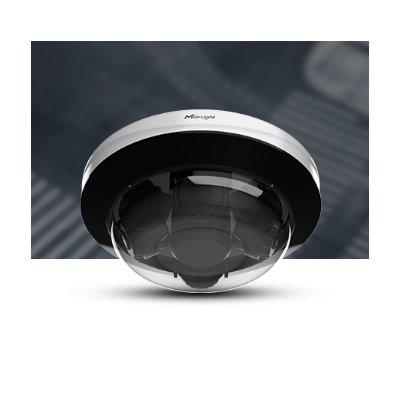 |
| American Dynamics’ security system has proven beneficial in investigations of civil liability cases |
When Paul Baratta signed on as director of Public Safety for Beth Israel Deaconess Medical Center (BIDMC), he set out to bring a greater sense of security to staff and patients alike. Previously, the hospital had two distinct security systems that did not communicate. There was no way to secure sensitive areas while still allowing people to visit patients and conduct other hospital business. Additionally, the vast nature of the multiple campuses made it difficult to respond to incidents in a timely manner. This directly led to an increase in theft of private property, computers and other hospital materials.
The installation of additional security cameras and digital video management systems played an important role in increasing the security presence within BIDMC. Today, the hospital has an integrated access control and video system from Tyco International comprised of:
- A Software House® C•CURE® 800/8000 access control system
- More than 200 Software House apC/8X and Istar door controllers
- 200 American Dynamics™ fixed and programmable dome cameras
- 16 American Dynamics Intellex® Ultra digital video management systems
The effort has paid off. Since deploying the new system, the hospital has reduced theft by 50 percent and vastly improved incident response times.
Understanding vulnerabilities
Baratta and his team are responsible for protecting patients and employees at the 585-bed hospital and satellite buildings throughout Boston and the western suburbs. To address safety challenges head on, BIDMC underwent a vulnerability analysis of its security infrastructure. The analysis revealed several key areas in need of enhancement.
Like many large multi-site facilities, BIDMC had disparate security systems that hindered public safety efforts. As a result, security officers at one facility had little insight into the activities at other buildings. If an alarm was activated at a remote site, they had to travel to the site without knowing what they would find. With numerous medical centers and research campuses throughout Boston and the suburban area, false alarms were more than just a nuisance. They took up valuable time and resources. So much so that officers responded in less than two minutes only 80 percent of the time. The public safety office wanted the ability to assess alarm events at remote sites before dispatching officers.
“With an integrated Software House and American Dynamics solution we have a system we can build on for years” |
The analysis also revealed weaknesses in the center’s legacy access control systems. “The systems didn’t communicate with each other and were often out of date,” Baratta said. “Consequently, there were many access cards floating around that didn’t belong to anyone. We also had no way to assign different levels of security access to the various employees.”
Evaluating security vendors
Working with Joe Gillis and Paul Lawton from Barry Security of Tewksbury, Massachusetts, Baratta and BIDMC systems manager Jeff Shockley evaluated several security vendors. They chose a tightly integrated security solution, including American Dynamics and Software House products from Tyco International. The expansive solution includes more than 200 American Dynamics fixed and SpeedDome Ultra programmable dome cameras deployed in and around BIDMC sites. The cameras record on 16 Intellex Ultra digital video management systems and are monitored via the Software House C•CURE 800/8000 access control software.
“The integration of these various systems made perfect sense from a cost and functionality standpoint. It provides a single security system platform that makes monitoring and maintenance a breeze,” Gillis said. “With an integrated Software House and American Dynamics solution we have a system we can build on for years.”
Strong results
The system has already proven its value. When an alarm is activated, C•CURE 800/8000 displays live footage of what’s going on in that area. Dispatchers can instantly see the location of the alarm and the nearest camera. They can also take control of the camera to pan, tilt, zoom, or freeze frame to better assess the situation. In fact this also works at remote sites and eliminates unnecessary travel time.
“With the new system we’ve driven down response times,” Baratta said. “We now respond within two minutes 91 percent of the time — an improvement of 11 percent. That’s a dramatic improvement and a huge time savings for my staff.”
“This new system has made a huge difference. People feel confident that the security zones help protect them and their personal property" |
The integrated system has also proven its value in deterring crime. When several laptop computers disappeared, BIDMC was able to catch the culprit in short order. “We caught an employee hiding computers in a bin and wheeling them out of the hospital,” Baratta explained. “We copied the surveillance footage onto a disk. When I brought the suspect into my office and played the footage back for him, he confessed on the spot.”
In another incident, BIDMC was able to apprehend a criminal within 48 hours of installation. When Baratta received reports of after-hours break-ins at one of the off-site clinics, he installed a security dome camera behind the building. He also configured Intellex to record footage as soon as it detected motion in the dome’s field of view. When a man tried to break a rear window to get into the building, his activities were captured and displayed live on C•CURE 800/8000. On-site security immediately notified the local police, who arrested him within minutes.
“In 2001 we were averaging 24-28 thefts per month. Today the average is 12-14 per month. That is a decrease in crime by almost 50 percent, which is significant to our security staff and our patients,” said Baratta.
The security system has also proven beneficial in investigations of civil liability cases. “We’ve had ‘slip and fall’ claims that we had no way of verifying. This caused the hospital to pay out several claims due to lack of evidence,” Baratta said. “Today, the dome cameras and corresponding recorded footage have been able to validate what really happened. Because footage is automatically recorded and backed up, security personnel can quickly and easily access archived footage. They no longer have to sort through cumbersome video tapes.”
The improved system also enabled the medical center to establish more defined security zones. Using the C•CURE 800/8000 badging software, the hospital re-badged all of its employees. Each employee now has a single security card that grants access to appropriate BIDMC facilities. For example, a visiting doctor can have access to research, but not to patients. This ensures that sensitive areas, pharmacies and research clinics, are only accessible to authorised personnel.
Additionally, the C•CURE 800/8000 software is integrated with the hospital’s HR database, making it easy to keep access controls up-to-date. If an employee is terminated, BIDMC can quickly deactivate the access card to prevent any chance of unlawful entry. If a card is not used for six months, the security team receives a report and deactivates the card.
Peace of mind
“Our security infrastructure has jumped leaps and bounds ahead of where it was,” Baratta said. “This new system has made a huge difference. People feel confident that the security zones help protect them and their personal property. And cutting down on false alarms frees my staff to focus on crime prevention and community policing. Today, our security staff has a visible presence instead of having to chase nuisance alarms. This gives patients a greater sense of well-being.”
The hospital security staff plans to increase its security presence in the months and years to come. Currently they are testing day/night cameras in outdoor locations to gain a clearer view of activities in low light areas. They also plan to add to areas off campus, such as patient care facilities. “American Dynamics and Software House solutions have not only improved the security of our facility, but they have made my job more manageable,” said Baratta. “I’m glad that we could bring such a sense of security and well-being to the employees and patients of Beth Israel Deaconess Medical Center.”

















